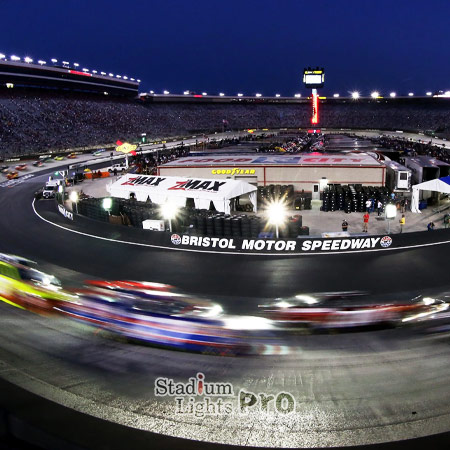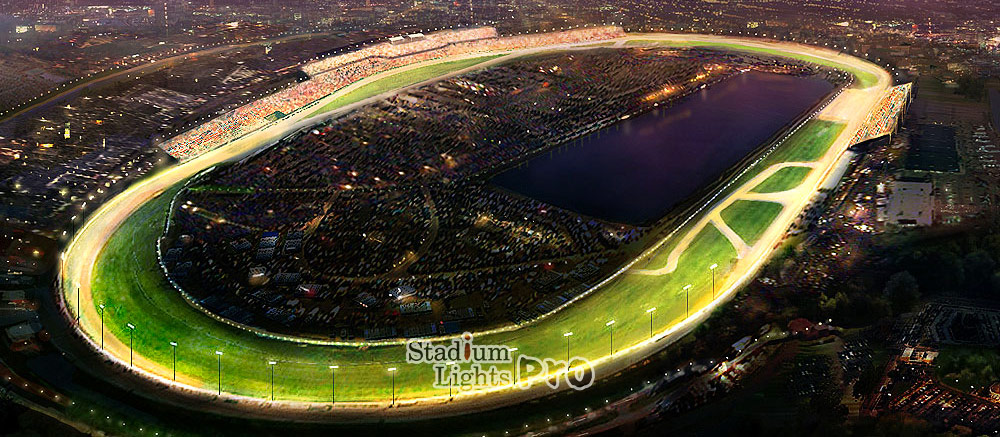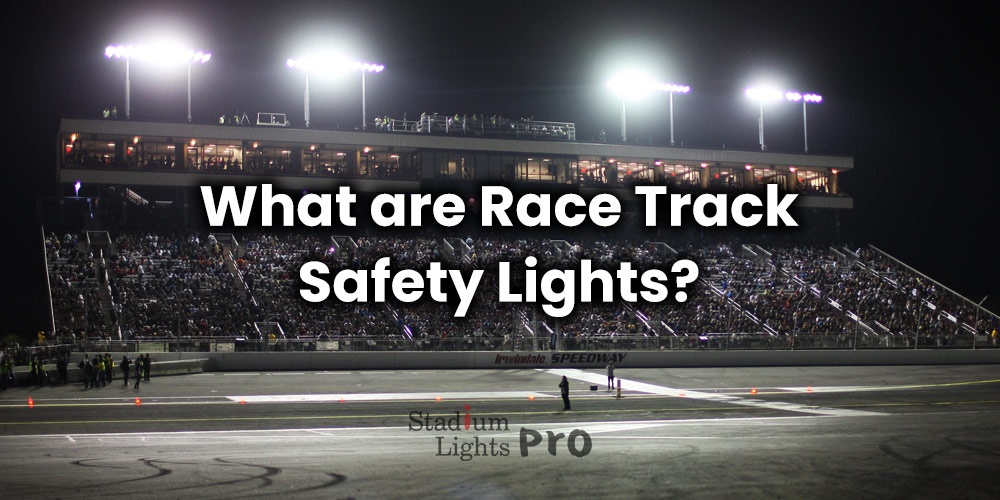Race track safety lights are a series of warning lights installed around a race track to alert drivers of potential hazards or dangerous situations, such as debris on the track, an accident ahead, or changes in weather conditions. The lights are typically color-coded and strategically placed to provide drivers with clear and immediate visual cues to help them avoid accidents and stay safe while racing.
Table of Contents
ToggleWhat is a race track warning system?
 The race track warning system is a crucial safety measure in motorsports, particularly in events where cars or motorcycles are racing at high speeds on a closed circuit track.
The race track warning system is a crucial safety measure in motorsports, particularly in events where cars or motorcycles are racing at high speeds on a closed circuit track.
When a hazard is detected, the race officials will wave a yellow caution flag, indicating to the drivers that they must slow down and proceed with caution. In some cases, a safety car may be deployed to lead the cars around the track at a controlled speed until the hazard is cleared.
The caution period is also an opportunity for drivers to make pit stops, change tires, and refuel. However, they must do so while maintaining their position on the track and following the rules set by the race officials.
Types of lights commonly used as safety lights on race tracks
Red lights
Red safety lights on a race track are typically used to indicate a full course caution. This means that there is a hazard on the track, such as debris or an accident, that requires drivers to slow down, maintain their positions, and be prepared to stop if necessary. The red lights are often displayed in a flashing pattern to make them more visible to drivers and are located at various points around the track, such as near flag stations or on top of safety vehicles. The full course caution period will typically continue until the hazard has been cleared from the track and the race officials feel it is safe to resume racing.
Yellow lights
Yellow lights are commonly used in race tracks to signal a local caution, which warns drivers of a potential hazard in a specific section of the track, such as debris or a disabled car, that necessitates them to decelerate and be prepared to avoid the danger. The lights are generally positioned at different points along the track, including flag stations or safety vehicles, and flash to improve their visibility. Flag marshals may also use yellow flags to supplement the warning. The local caution phase may persist until the hazard has been removed and race officials determine that it is secure to continue with normal racing speeds.
Green lights
To commence or conclude a race, green lights on a race track are commonly used to alert drivers to start or resume racing at full speed. At the outset of a race, the green light is generally exhibited after drivers have taken their starting positions, and the track has been confirmed safe for racing. Similarly, at the conclusion of a caution period, race officials often display the green light once any debris or hazards have been cleared from the track and officials have determined it safe to continue racing. The green light is stationed at different points around the track, such as the flag stand or near the start-finish line and usually flashes in a constant, non-flashing pattern.
Blue lights
When a faster car approaches a slower car on a race track, a blue light is typically illuminated to indicate that the slower car should yield and let the faster car pass. This is commonly referred to as a “blue flag” and is used to indicate when a faster car is attempting to overtake a slower car. The blue light is positioned at various locations around the track, such as near flag stations or on safety vehicles, and is frequently accompanied by a blue flag waved by flag marshals to provide additional notice to the drivers. Whenever a driver sees the blue light or flag, they must move aside and let the faster car pass safely. Failure to do so could result in a penalty for impeding another driver, which could have an impact on the race’s outcome.
White lights
White lights are commonly utilized in a race track to indicate the presence of track officials or emergency vehicles on the course. These lights are situated in various locations around the track, including flag stations or on top of safety vehicles, and they are typically displayed in a flashing pattern to make them more noticeable to drivers. If a driver spots the white lights, they must exercise caution and be ready to decelerate or stop if necessary to avoid contact with officials or emergency vehicles. The presence of white lights on a race track signifies the potential for danger or hazard, and drivers must remain attentive to ensure their safety.

Where can I buy safety lights for the race track?
The availability of race track safety lights can vary depending on the specific type of lights needed and the location of the buyer. For those looking for safety lights specifically designed for automotive racing, there are specialized racing equipment suppliers and manufacturers that cater to the motorsports industry that may carry such lights. It’s recommended to conduct an online search for such suppliers or to contact the manufacturer directly to inquire about purchasing options.
Alternatively, for those in need of more general types of safety lights, such as those used for construction sites or roadside emergencies, these lights may be more widely available. Hardware stores, home improvement centers, and online retailers that sell safety equipment and supplies may carry these types of lights. We should ensure that any safety lights purchased meet the necessary safety standards and regulations for their intended use to ensure maximum effectiveness in protecting drivers and race track personnel.
How much does it cost to buy racing safety lights?
The cost of safety lights for race tracks can vary greatly depending on several factors. One of the main factors is the type and quality of the lights. LED lights, for example, are generally more expensive than halogen lights, but they are more energy-efficient and have a longer lifespan. Another factor that can affect the cost is the size and power of the light. Larger and more powerful lights will typically cost more than smaller, less powerful ones. Additionally, the mounting and installation requirements can also contribute to the overall cost.
As a general estimate, prices for race track safety lights can range from around $50 to several thousand dollars per light, depending on the type and quality of the light. For example, a basic, low-power LED safety light might cost around $50 to $100, while a high-power, weather-resistant LED floodlight designed for outdoor use might cost $500 or more. Similarly, a specialized blue warning light for race tracks might cost around $200 to $300, while a large, high-intensity white light for track lighting might cost $1,000 or more.
Conclusion
Safety lights are a crucial component of race track safety, as they provide visual signals to drivers that indicate potential hazards, warnings, and other essential information. These lights are located at various points around the track and are designed to grab the attention of drivers, even at high speeds, and help them make quick decisions in response to changing track conditions.
The use of safety lights, such as the red, yellow, and white lights, is essential for providing warnings to drivers in case of emergencies, such as accidents or debris on the track. They can help to prevent collisions and injuries, by signaling drivers to slow down or stop, and take evasive action if necessary.
Similarly, the green light is a crucial component of race track safety, as it signals the start or resumption of racing after a caution period, and allows drivers to resume racing at full speed. This ensures that all drivers are on the same page, and racing can resume safely, without the risk of collisions or accidents.
The blue light and flag are also vital safety features of a race track, as they help to ensure that faster cars can safely pass slower cars without incident. This prevents congestion on the track and reduces the risk of collisions or accidents caused by slower cars impeding faster ones.
If you require further information regarding warning lights and safety lights for your race track, do not hesitate to reach out to us. We provide complimentary lighting design and consultation services to help you select the most appropriate lighting system to meet your requirements. Our experts are readily available to answer any queries and offer professional guidance to ensure you can make an informed decision about the best lighting solution for your race track.

